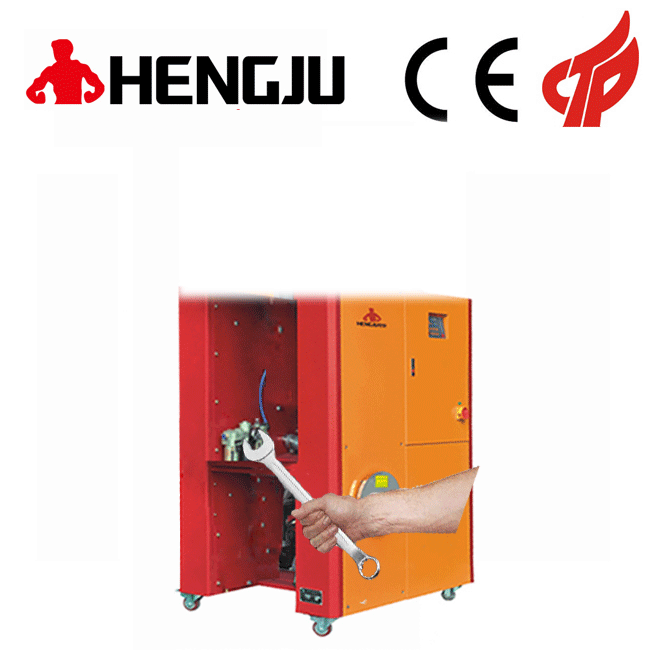The temperature value of the plastic desiccant dryer after drying
Plastic desiccant dryers are mainly used for monotonous and highly hygroscopic plastics. Plastic desiccant dryers send the dehumidified low dew point air into one or more standard drying hoppers to advance the drying power and shorten the monotonic time. The dehumidification dryer uses a fan to draw moist air into the machine and passes through the heat exchanger. At this moment, the moisture in the air condenses into water droplets and becomes dry air to be discharged out of the machine. This cycle reduces the indoor humidity.

Assuming that the monotonic time recommended by the supplier of the material to be dried of the plastic desiccant dryer is 4hr, the processing capacity is 100lb/h (1lb=0.4536Kg). To determine whether the airflow of the plastic desiccant dryer is sufficient, you can measure the temperature curve in the drying silo. Here, pay special attention to the temperature at 4hr (400lb). Assuming that the temperature at the 400lb material level in the drying silo of the desiccant dryer reaches the set value, then it can be considered that the air flow is sufficient (Editor: the desiccant dryer does not use materials on the premise). Assuming that the material in the drying silo only needs 1 hr, 2 hr or 3 hr to be fully heated, it clarifies that the air flow cannot complete the heating and drying of the material under the predetermined yield. Lack of heating may indicate that, regarding the productivity of the desiccant dryer, the drying barrel is too small, or the airflow is restricted due to clogged filters or damaged hoses. Too much air volume can also cause problems, which not only wastes power, but also causes high return air temperature and damages the function of the desiccant.
Assuming that the material is not properly monotonous after coming out of the plastic desiccant dryer, it should be checked whether the drying silo has enough space to provide sufficient and useful drying time. The useful drying time of a plastic desiccant dryer refers to the time during which the pellets are actually exposed to the proper monotonic temperature and dew point. Assuming that the particles stay in the desiccant dryer silo for insufficient time, they will not be properly dried. Therefore, you should pay attention to the size and shape of the pellets or crushed materials, which will affect the bulk density and residence time of the dried materials. The return air filter of the plastic desiccant dryer can prevent the filamentous material from polluting the rotor and affecting its moisture absorption function.
|
 +8613669807274
+8613669807274
 +8613669807274
+8613669807274 wto-btb@wto-btb.com
wto-btb@wto-btb.com Tel: +8613669807274
Tel: +8613669807274 SMS: +8613669807274
SMS: +8613669807274